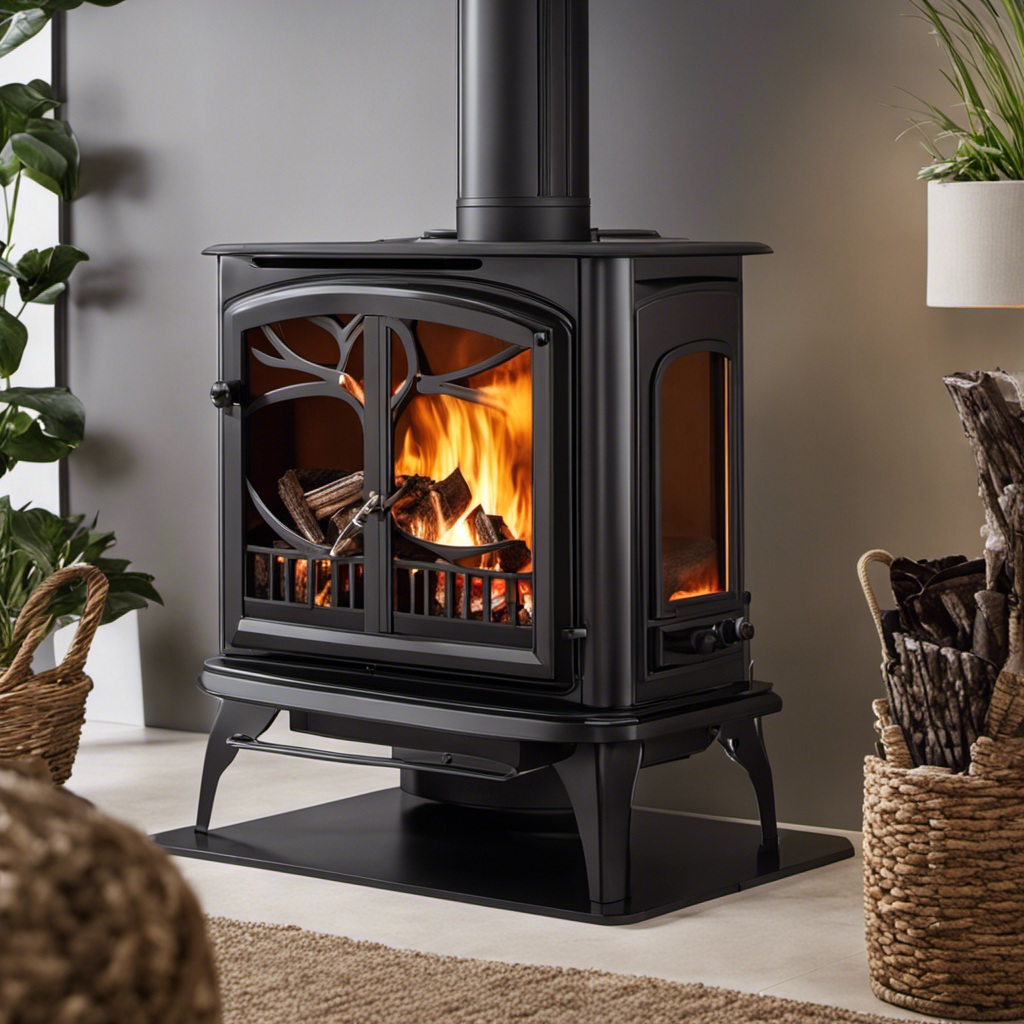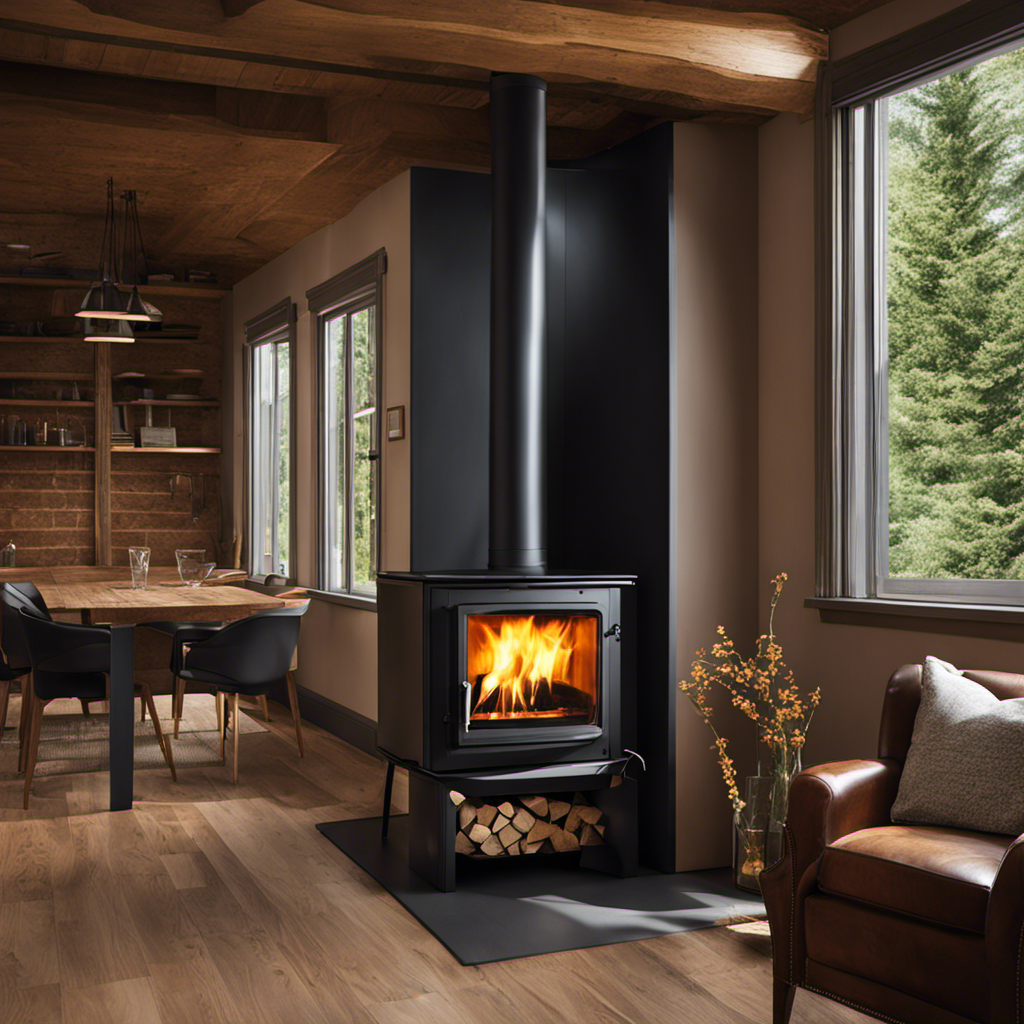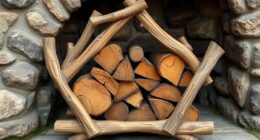
In my years of experience working with wood stoves, I have come to understand a crucial lesson: not all types of wood are suitable for burning. There are specific kinds of wood that should be avoided as fuel for the fire at all costs. Believe me, I have witnessed the repercussions firsthand.
So, if you want to avoid a smoky disaster or harmful toxins filling your home, pay close attention. In this article, I’ll reveal the species of wood you should steer clear of when it comes to your wood stove.
Key Takeaways
- High moisture content wood should not be burned in a wood stove as it can cause excessive smoke and creosote buildup.
- Softwoods, especially those with high resin content like pine and spruce, should be avoided due to their fast burn rate and increased creosote production.
- Treated or painted wood should not be burned as it releases harmful chemicals such as lead, arsenic, and VOCs, which can lead to respiratory problems and long-term health issues.
- Wood that is poisonous, toxic, or has excessive resin or sap, such as pressure-treated wood, plywood, particleboard, and resin-rich wood like pine, should be avoided to minimize health risks and reduce smoke and creosote buildup.
High Moisture Content Wood
I can’t burn high moisture content wood because it can cause excessive smoke and creosote buildup in my wood stove. High moisture content wood refers to wood that hasn’t been properly seasoned and still contains a significant amount of water. Seasoning is the process of drying wood to reduce its moisture content. This is typically done by allowing the wood to air dry for a period of time.
Burning high moisture content wood can result in inefficient combustion, as the energy from the fire is used to evaporate the water instead of generating heat. Additionally, the excess moisture can lead to the production of more smoke and increased creosote buildup in the chimney, which can be a fire hazard.

Instead of burning high moisture content wood, it can be used for alternative purposes such as crafting or as a source of compost.
Now, let’s move on to discussing the suitability of softwoods for wood stoves.
Softwoods
Can softwoods be used as a fuel source in a wood stove, or are they less efficient compared to hardwoods?
Softwoods can indeed be used as a fuel source in a wood stove, but they’ve some differences compared to hardwoods.
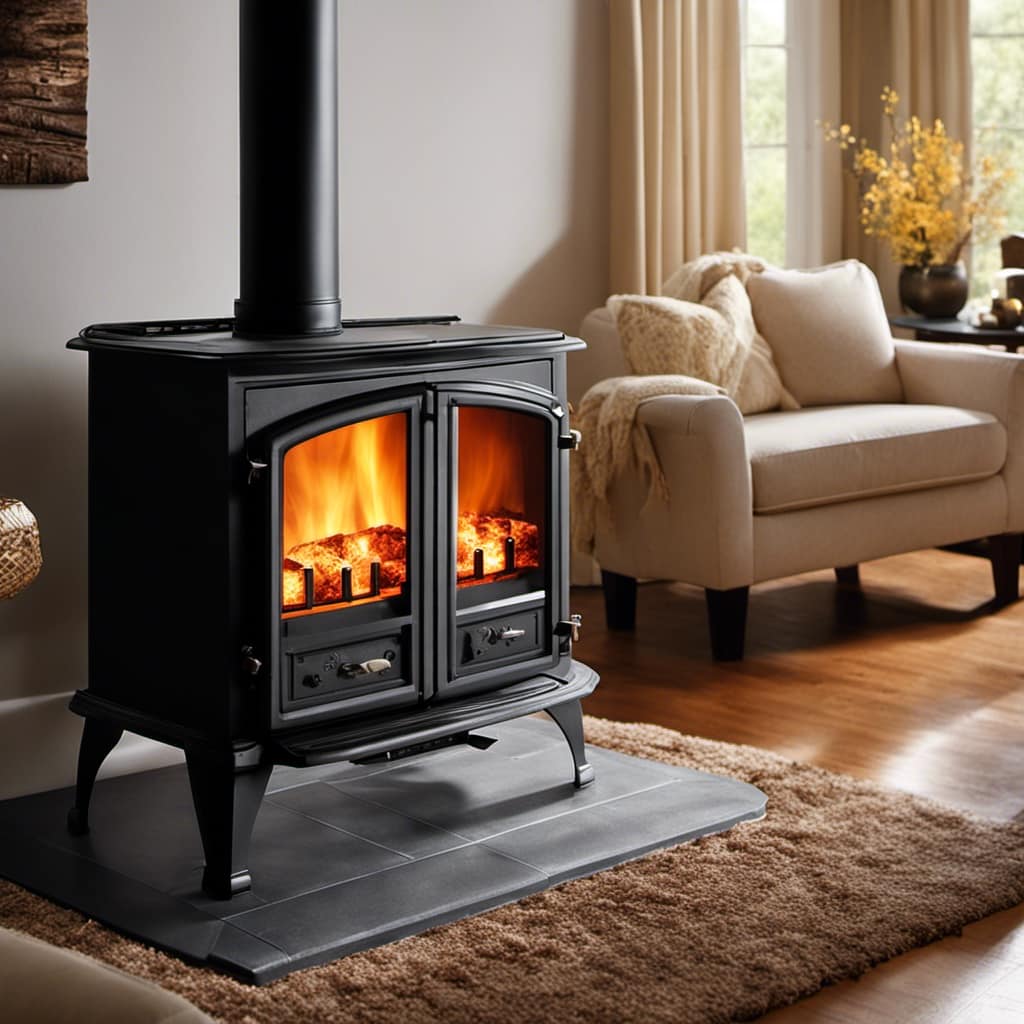
Softwoods, such as pine and spruce, have a higher resin content and lower density than hardwoods. This means that they burn faster and produce more heat in a shorter amount of time.
However, softwoods also tend to produce more creosote, a flammable substance that can build up in the chimney and increase the risk of chimney fires.
To mitigate this risk, it’s important to properly season softwoods before burning them, allowing the moisture content to decrease.
Alternatively, if you’re concerned about creosote buildup, there are softwood alternatives, such as oak or maple, which have lower resin content and burn more slowly and efficiently.
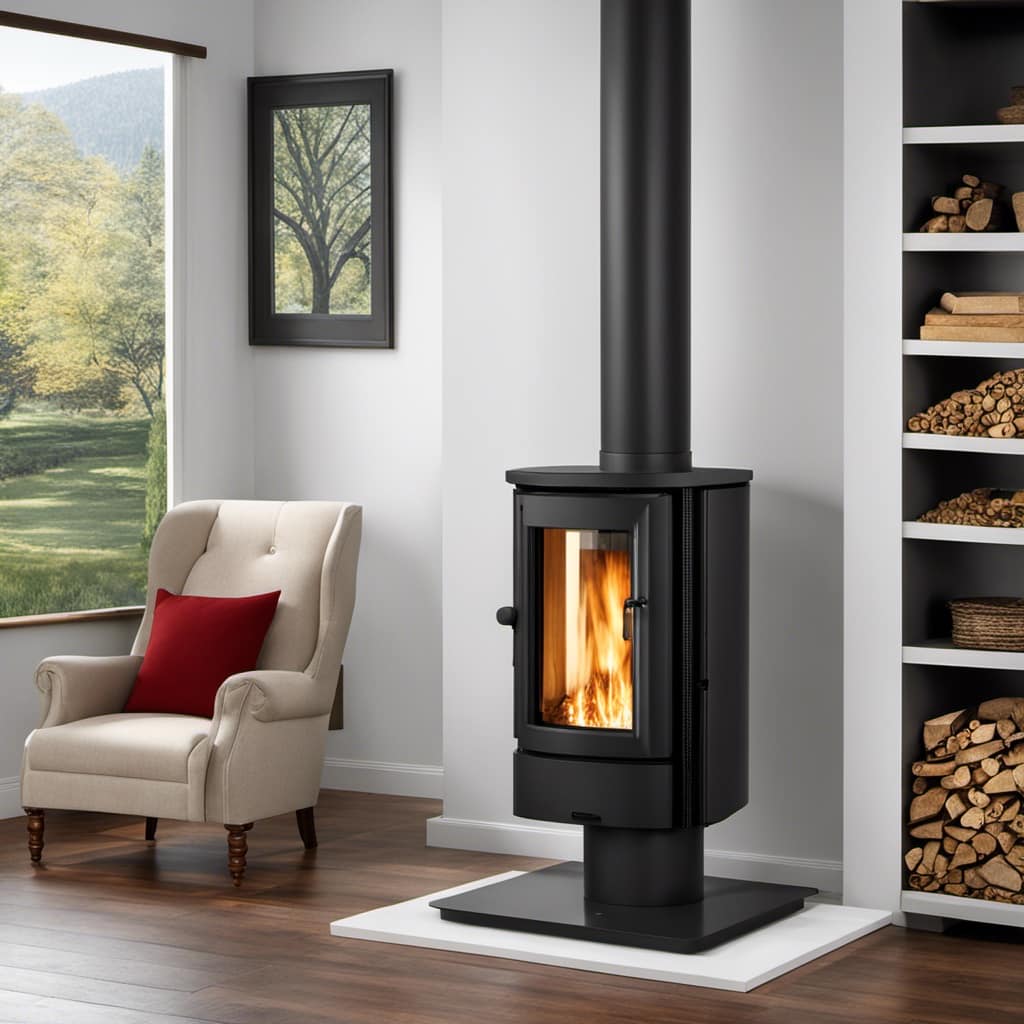
Treated or Painted Wood
Using treated or painted wood in a wood stove can potentially release harmful chemicals into the air, affecting the quality of indoor air and posing health risks. The environmental impact of burning treated or painted wood is significant due to the release of toxic substances such as lead, arsenic, and other volatile organic compounds (VOCs). These pollutants can contribute to respiratory problems, allergies, and even long-term health issues.
It’s crucial to avoid burning treated or painted wood to ensure a safe environment. Fortunately, there are alternatives to burning treated or painted wood in a wood stove. One option is to use untreated, natural wood, such as hardwoods like oak or maple, which have lower moisture content and burn cleaner. Another alternative is to use manufactured firelogs made from compressed sawdust and other renewable materials. These firelogs produce less smoke and pollutants, making them a safer choice for indoor burning.
Poisonous or Toxic Wood
Burning poisonous or toxic wood in a wood stove can release harmful chemicals into the air, posing serious health risks. To ensure the safety of your household, it’s crucial to avoid burning hazardous wood. Here are three types of wood that should never be used as fuel in a wood stove:
-
Pressure-treated wood: This wood is infused with chemicals to prevent rot and insect damage. Burning it releases toxic compounds like arsenic, copper, and chromium, which can lead to respiratory problems and even cancer.

-
Plywood or particleboard: These engineered woods often contain glue or adhesive that emits formaldehyde when burned. Breathing in formaldehyde can cause irritation to the eyes, nose, and throat, as well as headaches and respiratory issues.
-
Painted or stained wood: The chemicals in paint or stain can release volatile organic compounds (VOCs) when burned. VOCs can contribute to indoor air pollution and have been linked to various health problems, including asthma and allergies.
By avoiding the burning of hazardous wood, you can minimize the health risks associated with inhaling toxic chemicals.
Now, let’s discuss another important aspect of wood selection: wood with excessive resin or sap.

Wood With Excessive Resin or Sap
I find wood with excessive resin or sap to be challenging to work with due to its stickiness. When it comes to choosing alternative firewood options, it’s important to consider the resin content of the wood. Resin-rich wood such as pine, fir, and cedar can create problems when used as firewood. The high resin content causes the wood to burn with excessive smoke and can lead to the buildup of creosote in the chimney, increasing the risk of chimney fires.
To avoid these issues, it’s recommended to opt for hardwoods like oak, maple, or ash, which have lower resin content. Additionally, proper storage and seasoning techniques play a crucial role in ensuring the quality of firewood. It’s essential to store firewood in a well-ventilated area, allowing it to dry properly. Seasoning the wood for at least six months before use helps to reduce the moisture content and improve the efficiency of the firewood.
Frequently Asked Questions
Can I Burn Wood With High Moisture Content if I Let It Dry Out First?
Yes, you can burn wood with high moisture content in a wood stove if you let it dry out first. However, it is not safe to burn wood with excessive resin or sap, even with proper maintenance of the stove.
Are All Softwoods Unsafe to Burn in a Wood Stove?
Burning softwoods in a wood stove is not recommended due to their high resin content, which can lead to excessive creosote buildup and increased risk of chimney fires. Consider alternative fuel sources for a safer and more efficient heating solution.

Is It Safe to Burn Small Amounts of Treated or Painted Wood in a Wood Stove?
It is not advisable to burn pressure treated wood in a wood stove. The chemicals used in the treatment process can release harmful toxins when burned. Similarly, painted wood should not be used as fuel in a wood stove due to the release of potentially toxic fumes.
Which Types of Wood Are Considered Poisonous or Toxic and Should Never Be Burned in a Wood Stove?
Burning wood with high moisture content or toxic properties in a wood stove can pose serious dangers. It is crucial to know which species of wood should not be burned to ensure the safety of your home and health.
Can Wood With Excessive Resin or Sap Be Safely Burned in a Wood Stove if the Stove Is Properly Maintained?
Burning wood with excessive resin or sap can release harmful fumes in a wood stove. It can also affect the maintenance and efficiency of the stove. Proper maintenance is crucial to ensure safe and efficient burning.
Conclusion
So, when it comes to burning wood in your wood stove, it’s important to choose the right species.

High moisture content wood can cause excessive smoke and creosote buildup, while softwoods burn faster and produce less heat.
Treated or painted wood can release toxic chemicals when burned, and poisonous or toxic wood should never be burned at all.
Lastly, wood with excessive resin or sap can lead to chimney fires.
By following these guidelines, you can ensure safe and efficient wood burning in your stove.

Growing up surrounded by the vast beauty of nature, Sierra was always drawn to the call of the wild. While others sought the comfort of the familiar, she ventured out, embracing the unpredictable and finding stories in the heartbeat of nature.
At the epicenter of every remarkable venture lies a dynamic team—a fusion of diverse talents, visions, and passions. The essence of Best Small Wood Stoves is crafted and refined by such a trio: Sierra, Logan, and Terra. Their collective expertise has transformed the platform into a leading authority on small wood stoves, radiating warmth and knowledge in equal measure.




